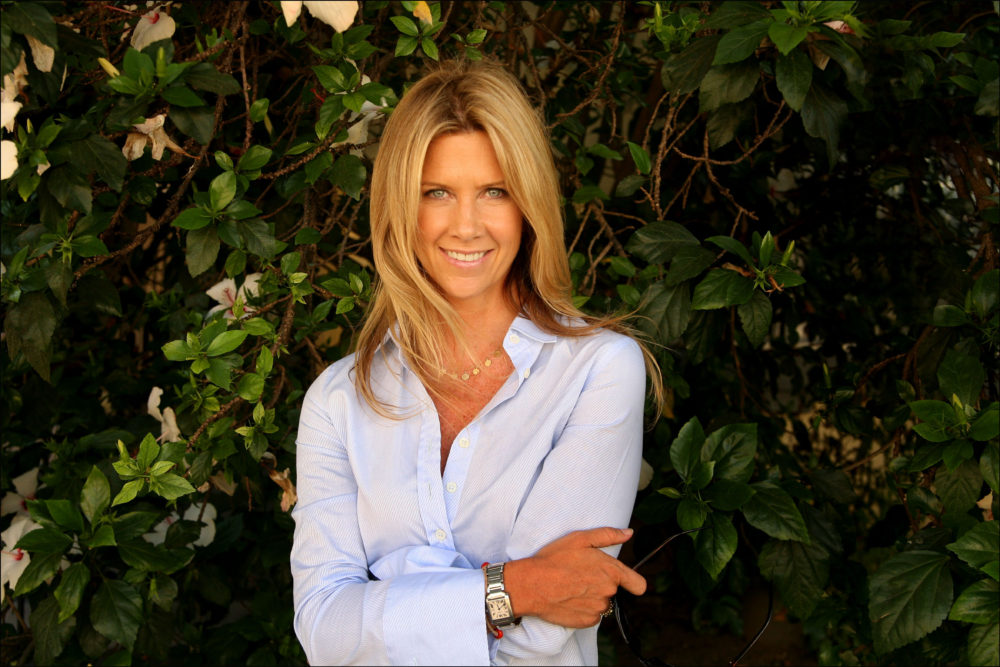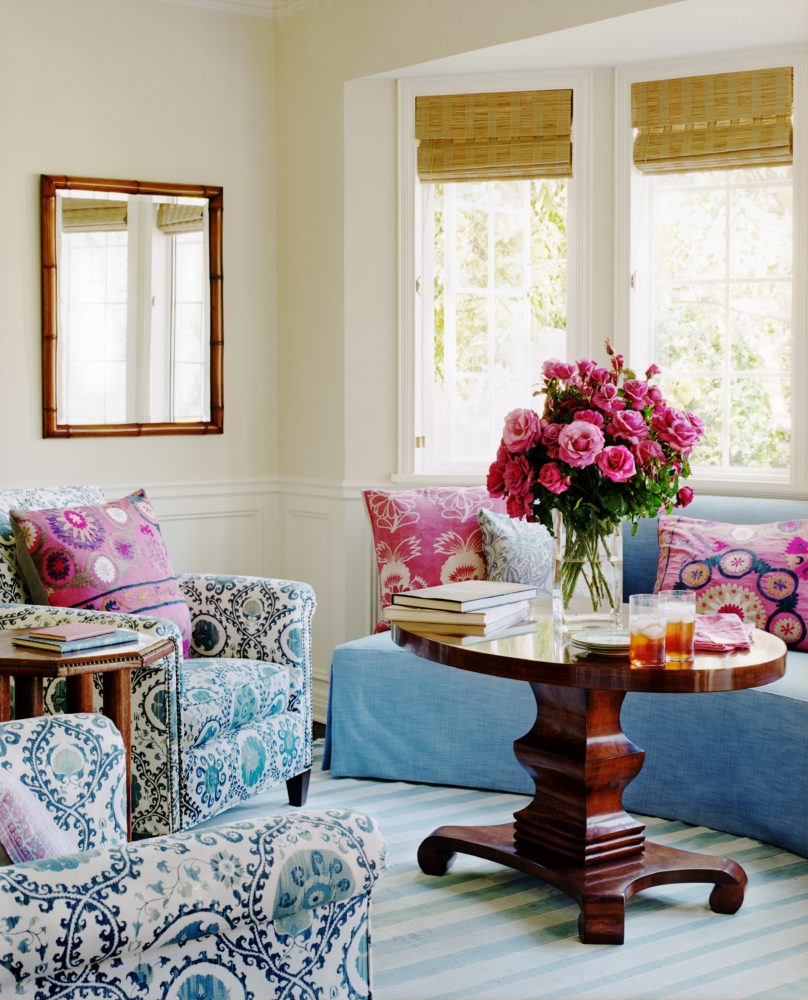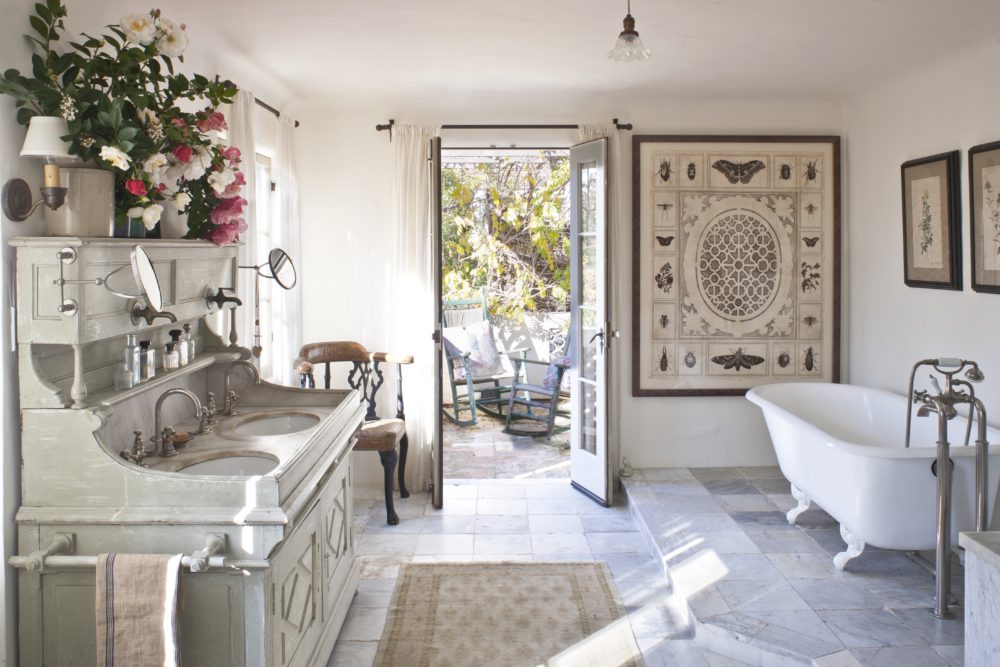
You might say Schuyler Samperton’s eye for design runs in the family. Her father, Jack Samperton, was a respected architect. Her mother, Novella—a devotee of American fashion designer Halston—was named alongside Deeda Blair and Evangeline Bruce as one of Washington, D.C.’s best dressed in the ’70s.’ Today, Schuyler, an interior and textile designer, has earned name recognition in her own right. In her 2016 interview with Flower magazine, she dished on her style, inspiration, and influences.
Flower: Your Instagram (@SCHUYLERSAMPERTON) suggests that your glamorous mother was seriously design-savvy. How did she influence the work you do today?
Schuyler Samperton: She never did what everyone else was doing, and she instilled that importance of originality in me as well. When I was growing up, all of my friends thought she was a movie star because she would pick me up at school in her Mercedes convertible wearing giant sunglasses, Indian-print headscarves, and a fur coat. Dad designed our house, but it was Mom who decorated it with gray flannel–covered sofas, fur rugs, and a not-entirely-practical-but-nonetheless great-looking Don Drumm coffee table. The aesthetic was amazing and didn’t look like anyone else’s house—that’s for sure. Today, I personally gravitate to antiques, color, and pattern, but what Mom gave me was a willingness to take chances with how I mix and layer more traditional things. And we always had flowers in the house—she spent a lot of time on that detail.
Could you tell us how you got into the decorating business?
Before I opened my own firm in 2003, I worked for designer Michael S. Smith (who has since gone on to decorate the White House), managing projects and styling his clients’ rooms with fresh flowers for photo shoots. I loved accessorizing and working with floral designers to figure out how to make a room look its most beautiful. Michael had very specific ideas in terms of the varieties of flowers he wanted, the color, height, and what sort of container should be used.

But now on your own it seems you get to indulge your wilder impulses, and often collaborate with floral designer Louesa Roebuck to augment the relaxed, vintage textile–filled houses you design. How did that come about?
I met Louesa several years ago and knew right away that we would be a good fit. She does what she calls wild harvesting, where she goes to fields and abandoned lots to gather branches, wildflowers, garden roses, and such. Not only does she collect from wild places, but her arrangements also reflect that natural feel with, for example, magnolia branches that retain the curve they had on the tree. She doesn’t force shapes. We first collaborated when I was photographing the work I did on Carolyn Murphy’s Brentwood house.
Unconstrained arrangements also seem to echo the overall design impression we get from looking at your rooms.
Exactly. How I treat flowers is related completely to the work that I do. I never want anything I decorate to feel unapproachable or precious. Carolyn, for instance, happens to have an inherent bohemian streak, so for her we sourced vintage floral fabrics to lend a cozy, sort of country feel that complements her antiques and all of the reclaimed materials in the house.
What do you consider to be common threads found throughout your work, no matter whether the client has a bohemian, traditional, or modern sensibility?
There’s something really romantic about finding a great antique textile that you know no one else can have. I love the idea that these fragments had a different life at one time. Beyond that, it’s important to me that every room I decorate enhances the owner’s experience, and creates a comfortable environment that feels like home. That may happen by using color and pattern to inspire, invigorate, or soothe, or perhaps by creating a different furniture arrangement that helps the owner use the room in a new and more useful way.

Speaking of cozy environments, we understand you’re a big fan of the Bloomsbury Group and the look of their historic English country hangout, Charleston house.
My brother, a photographer, sparked my interest while I was studying art history in college. Then, two years ago, I had L.A. artist Katie Golden paint my own dining room walls, as well as some flower boxes, with Bloomsbury motifs. Those boxes make me happy every single day.
And in your West Hollywood living room we spy hand-stitched pillows and decoupaged lamps—those are crafty Bloomsbury-esque touches, no?
I made the lamps myself, so yes, they are very crafty! When my apartment was photographed for Novel Interiors [Potter Style, 2014], Louesa brought in sweeping branches and flowers to play up the Bloomsbury-influenced, devil-may-care, let’s-throw-caution-to-the-wind feeling. Apart from loose, dripping branches I tend to select natural, slouchy peonies, lilacs, and big roses. But whether it’s a chinoiserie wallpaper, vintage textile, or fresh arrangement, I will always love designing with flowers.

By Courtney Barnes
